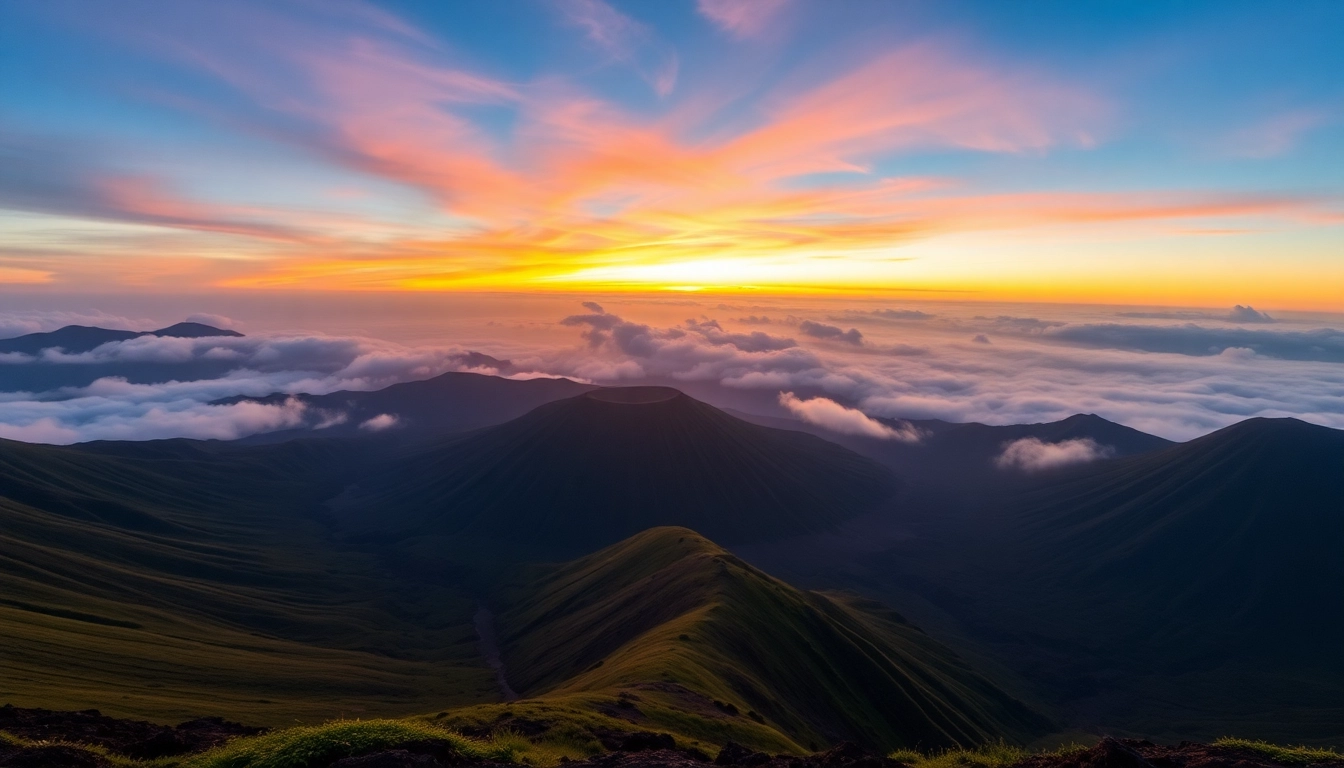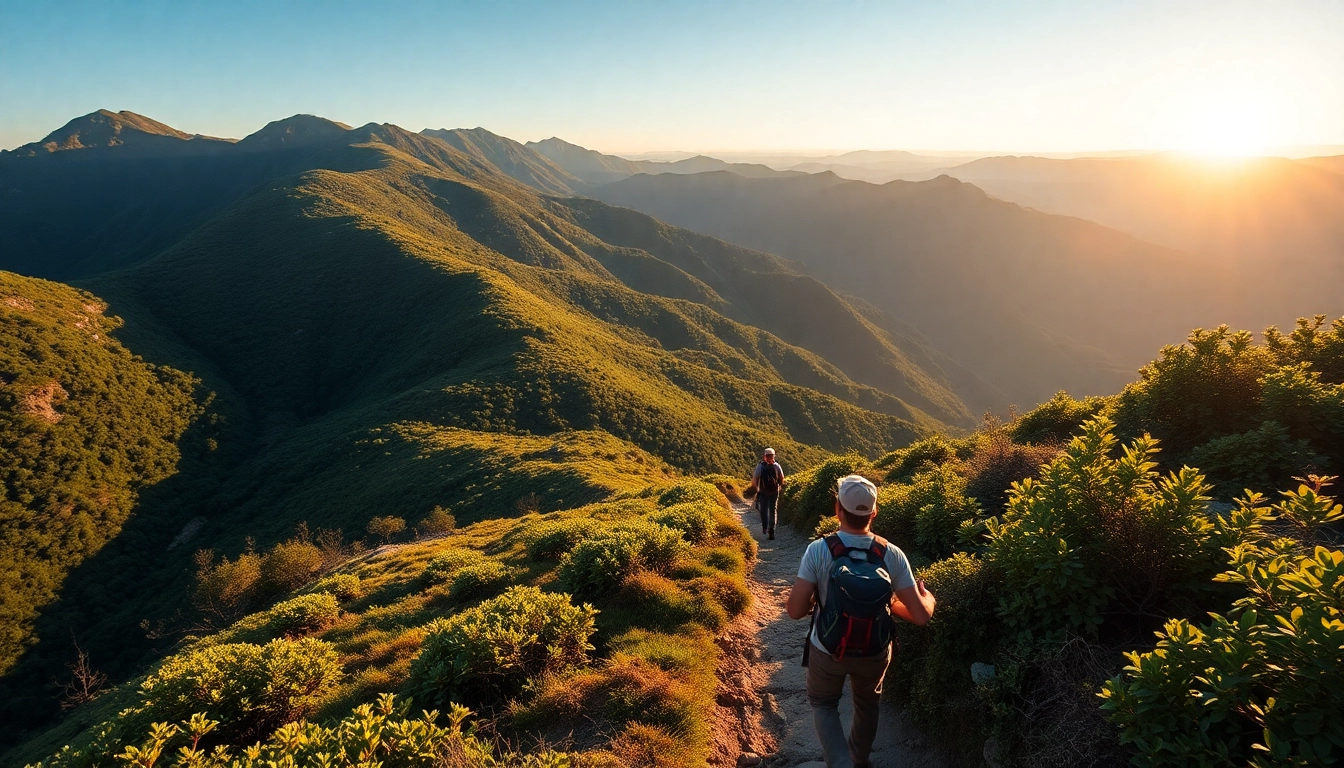Introduction to Mount Rinjani and Its Significance
Perched majestically on the island of Lombok in Indonesia, Mt. Rinjani stands as a symbol of geological grandeur and cultural richness. As Indonesia’s second-highest volcano, it ascends to an impressive elevation of 3,726 meters (12,224 feet). Its towering presence dominates the landscape of West Nusa Tenggara and is a magnet for adventurous travelers, seasoned hikers, and nature enthusiasts alike. Beyond its physical stature, Rinjani embodies profound ecological, cultural, and spiritual significance, making it one of Southeast Asia’s most intriguing natural marvels.
Understanding the importance of Mt. Rinjani involves exploring its geographical location, geological origin, and the centuries-old cultural importance it holds for the local Lombok communities. The volcano’s active status, historical eruptions, and ongoing geothermal processes make it not only a natural wonder but also a key subject of scientific research and environmental conservation efforts. This article delves into every facet of Rinjani, offering comprehensive insights for those planning to explore its slopes and learn about its vital role in Indonesia’s natural history.
Geographical Location and Geology
Located within the boundaries of Gunung Rinjani National Park, Rinjani spans approximately 41,330 hectares of lush, diverse ecosystems. Its position in the central part of Lombok makes it a dominant feature visible from most parts of the island, stretching across the regencies of North Lombok and Central Lombok. The savanna and rainforest landscapes surrounding the volcano provide a rich habitat for endemic flora and fauna, contributing to the area’s designation as a protected national park.
Geologically, Mount Rinjani is a stratovolcano formed from successive layers of lava, ash, and volcanic debris. It is part of the Sunda Arc, one of the most geologically active regions in the world, resulting from the subduction of the Indo-Australian Plate beneath the Eurasian Plate. The volcano’s structure is characterized by a prominent caldera, approximately 8 kilometers wide, which houses the Rinjani crater lake, Segara Anak. This caldera was formed during massive volcanic collapses and eruptions over the millennia, shaping the current landscape and contributing to the area’s ongoing geothermal activity.
Rinjani’s geological activity continues to influence seismic and volcanic dynamics in the region. The volcano is classified as active, with frequent eruptions and fumarolic activity, contributing to its status as a prominent geotourism hub. Its geological diversity also offers unique opportunities for scientific study, ranging from magma chamber analyses to monitoring volcanic unrest and predicting future eruptions.
Historical Eruptions and Volcanic Activity
Throughout history, Mount Rinjani has exhibited a pattern of eruptions that have significantly shaped both its landscape and local communities. The most notable eruption occurred between October and December 2015, which lasted for two months and caused substantial ash plumes reaching heights of up to 6 kilometers (3.7 miles). This eruption led to temporary evacuations and disrupted tourism but also underscored the volcano’s persistent activity.
Previous eruptions date back centuries, with records indicating eruptions in the 19th and 20th centuries that produced ash falls, lava flows, and pyroclastic events. These eruptions have created fertile volcanic soils that support rich agricultural practices on Lombok, especially rice paddies and coffee plantations.
Current monitoring systems, including seismic activity sensors, gas emission measurements, and thermal imaging, help scientists track Rinjani’s activity. The monitoring aims to predict eruptions more accurately, safeguarding local populations and tourists. While eruptions are a natural part of Rinjani’s life cycle, continuous vigilance and scientific research are essential to mitigate risks and ensure sustainable coexistence with this dynamic volcano.
Cultural and Spiritual Importance for Lombok
Beyond its geological features, Rinjani holds a sacred place in Lombok’s cultural and spiritual landscape. The mountain is revered by the Sasak and Balinese communities, who regard it as a dwelling of spirits and deities. Traditional ceremonies and rituals are often performed to honor the mountain’s spirits, seeking blessings for fertility, protection, and prosperity.
Local folklore narrates stories of Rinjani’s divine origins and its role as a guardian of the island. For example, the summit is considered a sacred site where offerings are made to maintain harmony between humans and nature. These cultural practices have persisted for centuries, reinforcing a spiritual bond with the volcano and fostering respect for its power and beauty.
This spiritual significance has also influenced the celebrations and festivals held in the surrounding villages. Such practices promote environmental stewardship and underscore the importance of conserving Rinjani’s natural and cultural heritage for future generations.
Planning Your Rinjani Trekking Adventure
Choosing the Best Routes and Seasons
Mt. Rinjani offers several trekking routes, each with unique characteristics suited for different skill levels and preferences. The most popular routes are the Sembalun and Senaru trails, both beginning from different villages on the northern side of the mountain. These routes lead trekkers toward the crater rim and ultimately to the summit, but they differ in terrain, pace, and scenery.
The optimal trekking season spans the dry months from May to September, when weather conditions are stable, and the risk of rain and landslides diminishes. Traveling during this period ensures safer, more comfortable hikes and better views of the landscape. The rainy season, from October to April, can make trails slippery and more challenging, but some experienced hikers prefer the lush, verdant scenery during this time.
Required Equipment and Preparation Tips
Proper gear is essential for a successful ascent. Trekkers should invest in high-quality hiking boots with ankle support, layered clothing to manage temperature fluctuations, and waterproof gear. Essential items include a sleeping bag, trekking poles, headlamp, gloves, and a hat for sun protection. A detailed packing checklist and briefing from experienced guides can significantly enhance safety and comfort.
Physical preparation involves cardiovascular training, strength conditioning, and altitude acclimatization to cope with the elevation gain and challenging terrain. Hydration and nutrition planning are crucial, as proper intake can prevent altitude sickness and fatigue. Consulting with travel experts and taking part in preparatory hike sessions also help ensure readiness for the physical demands of Rinjani.
Hiring Guides and Safety Measures
Guides play a vital role in ensuring safety, navigation, and cultural engagement during the trek. The cost for professional guides typically ranges around Rp. 350,000 (~USD 24) per day, with additional charges for porters, who help carry equipment and supplies. Hiring certified guides from reputable companies ensures adherence to safety regulations and enhances the overall experience.
Safety measures include registering your trek with park authorities, informing others of your itinerary, carrying communication devices or emergency beacons, and being aware of local weather forecasts. Responsible trekking also involves respecting the environment by staying on designated trails, minimizing waste, and supporting community-owned accommodations and services.
Guide to the Mount Rinjani Trekking Experience
Step-by-step Trekking Routes (Sembalun, Senaru)
The Sembalun route is favored for its gentle ascent, starting from the eastern side of the volcano. It comprises a long, scenic trek through savanna grasslands, with views of the surrounding mountains. The trek usually takes 2-3 days, with options to camp near hot springs or designated rest spots.
The Senaru trail, beginning from the western side, offers a more rainforest-laden experience. This route is also popular among first-time trekkers and guides through lush, tropical forests, waterfalls, and traditional villages before reaching the crater rim. The total trek duration is comparable to Sembalun but demands a different set of trekking skills due to its more rugged terrain.
Both routes converge at the crater rim, where trekkers can enjoy panoramic views of Segara Anak Lake and Mount Rinjani’s active crater. From here, summiting the volcano is a challenge requiring careful acclimatization and timespecific climbing schedules, ideally planned at dawn for clearer visibility.
Highlights and Key Attractions Along the Trail
- Segara Anak Lake: An emerald crater lake nestled within the caldera, offering mesmerizing views and thermal hot springs.
- Hot Springs: Naturally heated springs near the crater rim provide soothing baths after strenuous hikes.
- Rinjani Summit: The breathtaking pinnacle at 3,726 meters, rewarding hikers with a sweeping vista of Lombok and beyond.
- Waterfalls and Tropical Forests: Especially on the Senaru route, waterfalls like Sendang Gile and Tiu Kelep showcase Lombok’s lush biodiversity.
- Local Villages: Traditional Sasak communities along the routes offer cultural insights, crafts, and local cuisine.
Challenges and How to Overcome Them
The Rinjani trek presents physical and environmental challenges including altitude sickness, unpredictable weather, and rugged terrain. Preparation is key: gradual altitude acclimatization, physical conditioning, and mental resilience are essential. Trekkers should heed weather warnings and be flexible with scheduling, especially in the rainy season.
Common obstacles such as fatigue or injury can be mitigated through proper pacing, hydration, and regular rest. Having certified guides, carrying safety equipment, and knowing emergency procedures ensure that challenges are managed effectively. Recognizing personal limits and trekking within them fosters a safe and enjoyable experience.
Environmental Awareness and Conservation
Protecting Lombok’s Ecosystems
Rinjani’s ecosystems are delicate and diverse, ranging from volcanic alpine environments to tropical rainforests. Human activities, including tourism, can threaten these habitats through littering, trail erosion, and habitat disturbance. Conservation efforts focus on maintaining biodiversity and preventing deforestation.
Park authorities implement strict regulations, such as designated camping areas, waste management protocols, and restrictions on fires or cutting vegetation. Visitors are encouraged to adopt eco-friendly practices, including carrying reusable waste containers, participating in park cleanup activities, and supporting community-led conservation projects.
Responsible Travel Practices
Respect for local culture and environment enhances the sustainability of your trekking experience. This includes dressing modestly, engaging respectfully with local communities, and purchasing locally made products. It is essential to follow leave-no-trace principles, ensuring minimal impact on the land and wildlife.
Community Involvement and Support
Local communities play a crucial role in managing and protecting Rinjani’s natural resources. Supporting community-based tourism initiatives, such as homestays, guided tours, and local crafts, ensures economic benefits reach those who are most invested in conservation. Engaging with these initiatives fosters sustainable development, cultural preservation, and environmental stewardship.
Post-Trek Activities and Visiting Lombok
Local Culture, Food, and Accommodations
After conquering Rinjani, exploring Lombok’s vibrant culture enriches your experience. Traditional Sasak arts, music, and dance provide deep cultural insights. The island’s culinary scene features spicy satays, fresh seafood, and local delicacies such as Ayam Taliwang, a spicy grilled chicken.
Accommodation options range from luxury resorts to budget homestays, often located near the coast or in mountain villages. Staying with local families not only supports community livelihoods but also offers authentic cultural exchanges.
Additional Natural Attractions in Lombok
Lombok boasts pristine beaches like Senggigi and Kuta Beach, coral reefs perfect for diving and snorkeling, and waterfalls such as Sendang Gile and Tiu Kelep. Gili Islands—Gili Trawangan, Gili Air, and Gili Meno—are renowned for their vibrant marine life and relaxed atmosphere, making Lombok a versatile destination beyond its volcano.
Tips for Future Visits and Long-Term Engagement
Sustainable tourism is key: plan visits during off-peak seasons to reduce environmental pressure, participate in local conservation projects, and educate yourself about Lombok’s ecological challenges. Maintaining respectful interactions with local communities and supporting eco-friendly initiatives ensures that Rinjani remains a pristine natural wonder for generations to come.

